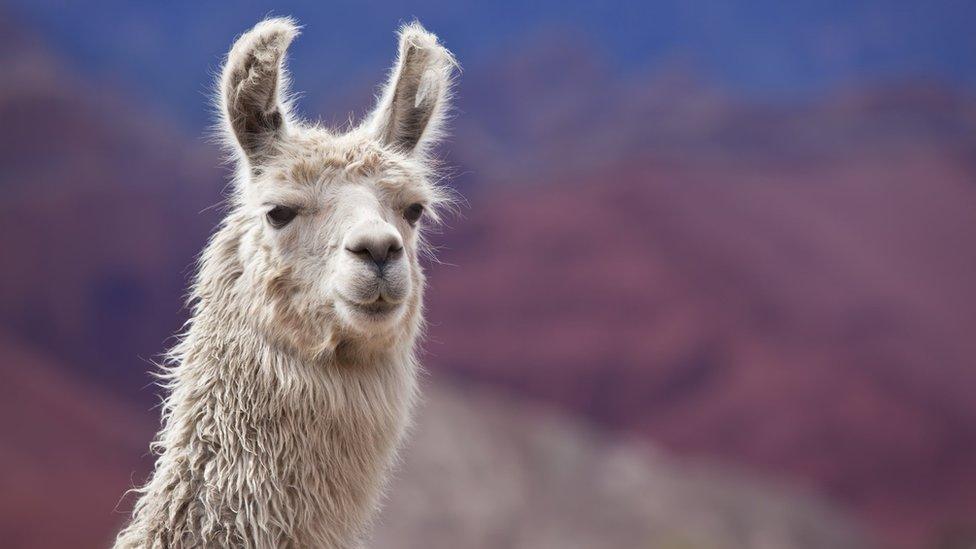Llama blood clue to beating all flu
- Published

Scientists in the US have recruited an unlikely ally in their efforts to develop a new flu treatment.
Llamas have been used to produce a new antibody therapy that has the potential to work against all types of flu, including new pandemics.
Influenza is the ultimate shape-shifter, constantly mutating its appearance to evade our immune system.
That is why a new flu jab is needed each winter and why the vaccine sometimes misses the mark.
Science is on the hunt for a way to kill all types of flu, no matter the strain or how much it mutates.
That's where the llama, better known for its wool, comes in.
The animals produce incredibly tiny antibodies in comparison to our own.
Antibodies are weapons of the immune system and they bind to the proteins that stick out from the surface of a virus.
Human antibodies tend to attack the tips of those proteins, but that's the part influenza mutates most readily.
Llama antibodies use their size advantage to wriggle a little bit deeper and attack the parts that flu cannot change.
The team at the Scripps Institute in California infected llamas with multiple types of flu to provoke an immune response.
They then scoured llama blood for the most potent antibodies that could attack a wide range of flu strains.
They picked four, and then set about building their own synthetic antibody that used elements from each.
It was tested on mice, which were given deadly doses of influenza.
Prof Ian Wilson, one of the researchers, told the ģÉČËŋėĘÖ's Science in Action: "It's very effective, there were 60 different viruses that were used in the challenge and only one wasn't neutralised and that's a virus that doesn't infect humans.
"The goal here is to provide something that would work from season to season, and also protect you from possible pandemics should they emerge."
The work, , is very early stage research and the team want to do more tests before starting human trials.
Holy Grail
The researchers tried two approaches to giving the animals the antibody.
The first was to inject them with the antibodies, and the second was a type of gene therapy.
The genetic instructions for making the antibody were packaged up inside a harmless virus, which was then used to infect the noses of mice.
The cells in the linings of the nose then started making the flu-killing antibody.
An additional advantage of this approach is that it could work in the elderly.
The older you are the worse your immune system gets, and the less effective the seasonal flu vaccine becomes.
But the llama-inspired approach does not need to train the immune system.
Prof Jonathan Ball, from the University of Nottingham, told the ģÉČËŋėĘÖ: "Having a treatment that can work across a range of different strains of virus is highly sought after. It's the Holy Grail of influenza.
"There will be an appetite, but it depends how well these things work, how easy it is to produce and also how costly it will be."
Follow James